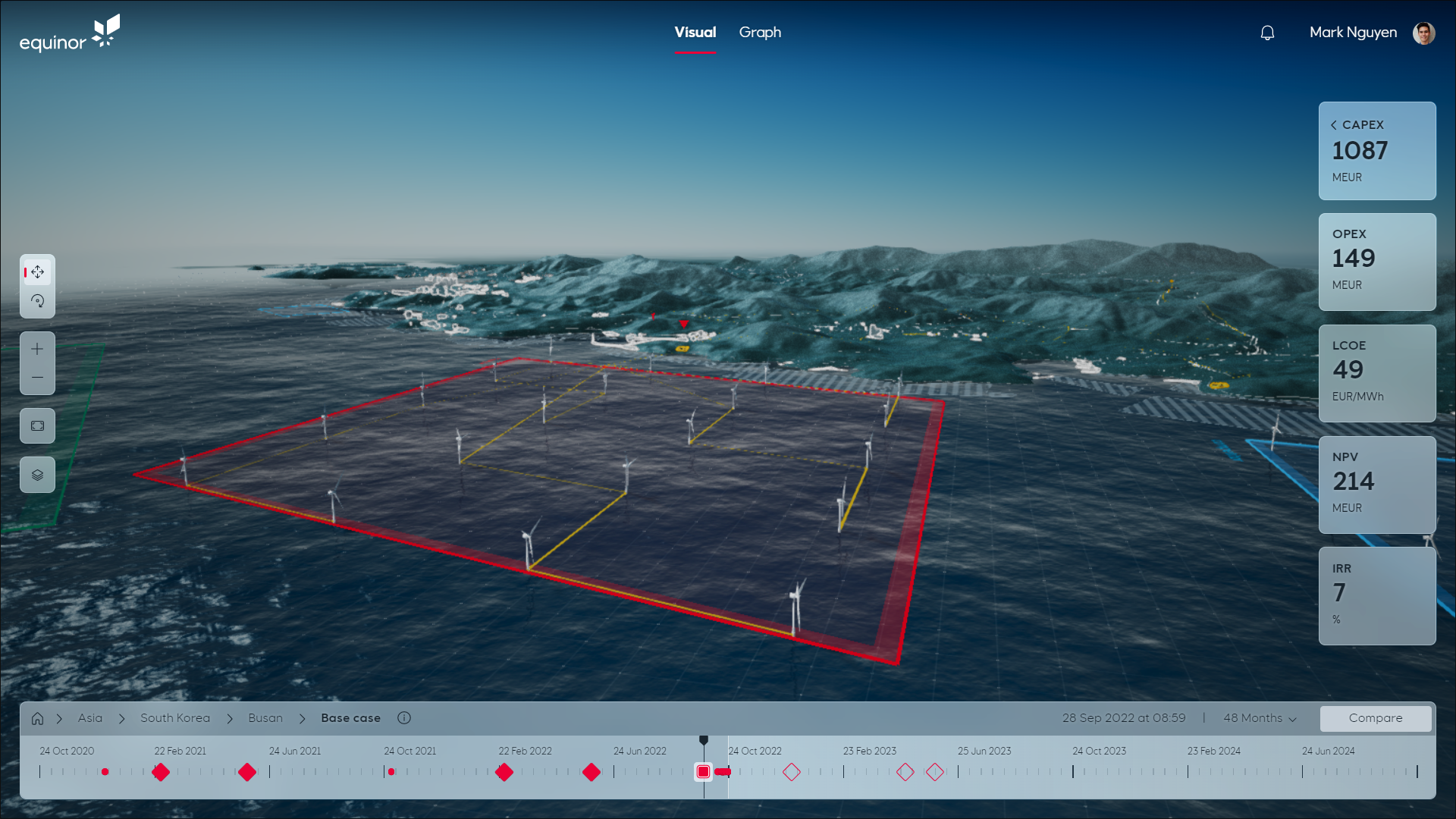Equinor 3D Offshore Windfarm Planner
We built a 3D platform to plan, build and operate offshore windfarms.
This was a pilot that was then greenlit to several further phases. Showcased at Microsoft Build 2023.
Made with BabylonJS, React and Azure
My role: User experience design, WebGL development (Babylon.js), React development
Project overview
The 3D Offshore Wind Farm Planner is a web-based application developed for Equinor, a global leader in offshore wind energy. The tool allows users to design and visualize offshore wind farm layouts in an interactive 3D environment directly in the browser.
Built using WebGL (Babylon.js), React, and Azure, the application helps stakeholders explore different turbine placements, distances, and configurations while considering real-world geographic and environmental factors. The 3D visualisation enhances decision-making by making complex spatial data accessible and intuitive.
The project demonstrates the power of immersive web technologies in supporting large-scale renewable energy planning and showcases how modern cloud infrastructure can deliver high-performance 3D experiences to a global audience.

Collaborating with an energy leader
Working closely with Equinor, one of the world's leading energy companies, our team ran collaborative workshops across multiple countries to align on vision, gather feedback, and refine the user experience.
We partnered with both in-house stakeholders—including energy analysts, engineers, and product leads—and external designers and developers to ensure the solution met real-world operational needs.
This cross-functional, international collaboration helped us shape a tool that is not only technically robust but also deeply informed by the practical challenges of offshore wind farm planning.
My contribution
My role focused on:
- WebGL Development: Built and optimized interactive 3D scenes using Babylon.js to ensure smooth performance and accurate spatial visualization.
- React Development: Integrated complex 3D components seamlessly into a React-based web interface.
- User Interface Design: Designed intuitive user interactions and UI components to support an accessible and engaging planning experience.